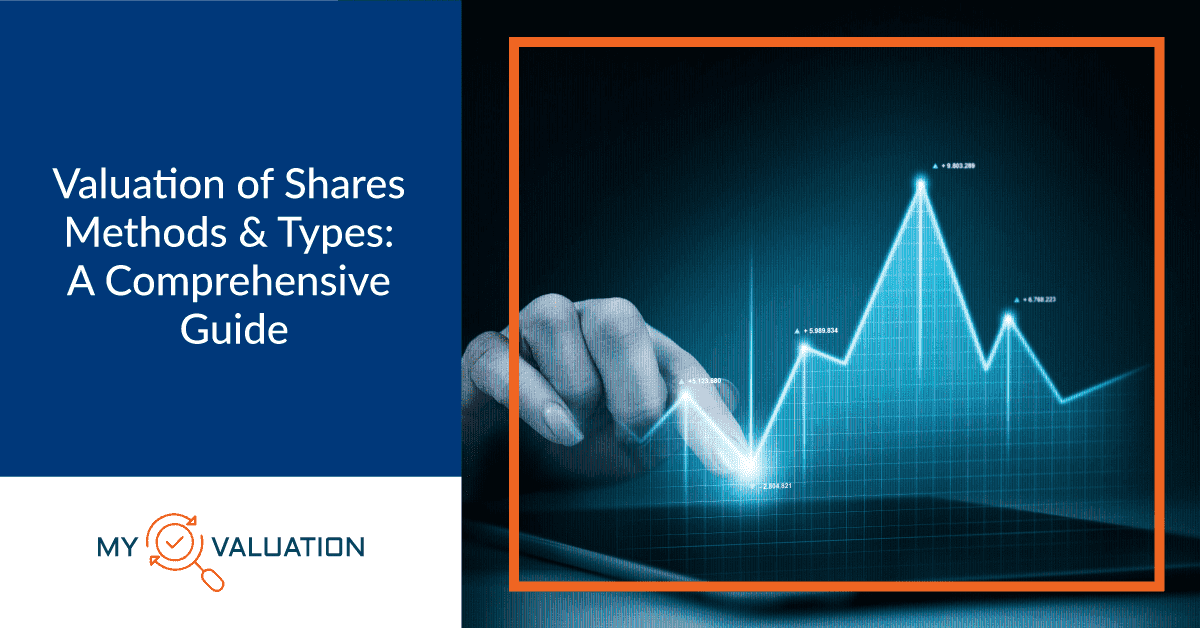Valuation of Shares Methods & Types: A Comprehensive Guide
What are shares worth to you as an investor?
Understanding share valuation can help you make smarter investment decisions.
For the uninitiated, share valuation is the process of determining the fair value or theoretical worth of a company’s shares. The idea is to estimate what a reasonable buyer would pay for the shares today.
Proper valuation gives you an analytical anchor to decide whether to buy, hold, or sell a stock.
However, mastering valuation takes time, but grasping the core methods is a great start.
But with so many share valuation methods, how do you know which one to use?
In this comprehensive guide, we’ve explained the three main approaches used by investors and financial analysts to help empower your stock market journey.
Income Approach
The income approach focuses on a company’s profit generation ability and uses metrics like cash flows and earnings to determine value.
The premise is that an asset is worth the future economic benefits it can provide its owner.
Let’s explore the key income valuation models:
1 – Discounted Cash Flow (DCF) Method
The DCF model values a business by projecting its future cash flows and discounting them back to the present using a required rate of return. It involves:
- Estimating future free cash flows to firm (FCFF) for 5-10 years, and a terminal value.
- Determining the weighted average cost of capital (WACC) as the discount rate.
- Discounting the cash flows to present value using WACC.
- Summing the discounted FCFF and terminal value to get total equity value.
A DCF model allows valuing companies with unstable historical earnings and is ideal for high-growth potential firms. However, it relies heavily on assumptions for cash flow forecasts.
2 – Dividend Discount Model (DDM)
The dividend discount model values a business based on its expected future dividend payments to shareholders. The value is the sum of the present value of all future dividends.
The formula is:
Share Value = Expected Dividend per Share / (Discount Rate – Dividend Growth Rate)
The DDM works well for mature, high dividend-paying companies but does not factor in earnings reinvestment and growth.
3 – Earnings Capitalization Model (ECM)
The ECM values a business based on its earnings.
It estimates how much money the business will make in the future. Then, it divides this by a capitalization rate to find the value of the business today.
The capitalization rate depends on how fast the business is expected to grow.
The ECM is quick and easy to do. But, the value depends a lot on accurately estimating future earnings and picking the right capitalization rate.
4 – Adjusted Present Value (APV)
APV is a type of valuation model, like the Discounted Cash Flow model.
It separates out certain cash flows before discounting everything back to today’s dollars.
For example, it might separately value things like tax benefits, synergies, or other specific cash flows.
This allows APV to better measure the net value added by an investment. It isolates the core business value from other contributions.
Asset Approach
The asset approach values a business based on the economic value of its assets net of liabilities.
Let’s look at some asset valuation methods:
1 – Book Value Method
The book value method relies on the assets and liabilities recorded on a company’s balance sheet to estimate the business’s value.
Book value is calculated as:
Book Value = Total Assets – Total Liabilities
Total assets include current assets like cash, accounts receivable, and inventory, as well as long-term assets like property, plant, and equipment. Total liabilities, on the other hand, include both current liabilities such as accounts payable, and long-term debt.
The book value represents the accounting value of the company based on the historical cost of assets less depreciation and liabilities
However, it may be very different from the current fair market value of the company’s assets and does not account for intangible assets.
Still, book value provides a relatively simple starting point for valuation.
2 – Adjusted Net Asset Method
The adjusted net asset method uses the assets and liabilities from the balance sheet but modifies their valuation to estimate fair market values.
For example:
- Property is valued at current market prices rather than historical cost
- Inventory is valued at current replacement cost rather than purchase cost
- Brands, patents, and other intangible assets are included in the total assets
This provides a more relevant estimate of the liquidation value of the company if the assets were sold today. However, it still does not consider future earnings potential.
3- Replacement Cost Method
The replacement cost method attempts to value the company by estimating the cost to recreate or replace the business.
This involves:
- Valuing all tangible assets like property, plant, and equipment at their current replacement cost.
- Adjusting those values for depreciation to estimate the current depreciated replacement cost.
- Estimating the cost to replace any intangible assets.
This aims to measure what it would cost to recreate the company from scratch in today’s dollars.
However, replacement cost does not necessarily equal market value. It also fails to consider future profitability and cash flows.
In summary, the asset-based methods offer relatively simple and straightforward ways to value a business but have limitations for intangible assets and earnings potential.
Market Approach
Market valuation models derive value through comparison with similar publicly traded companies or recent transactions.
There are two main share valuation methods in this approach:
1 – Comparable Company Analysis (CCA)
Comparable company analysis values a private company using the trading multiples of similar public companies.
The steps are:
- Identify comparable public companies and calculate their valuation multiples like P/E, EV/EBITDA, and P/B.
- Select appropriate multiples based on comparability.
- Estimate the private company’s financial metrics like revenue, and EBITDA.
- Apply the multiples to the private company’s metrics to estimate its valuation.
CCA incorporates market sentiment and ratios. But every company is unique, so finding “perfect” peers is impossible.
2 – Precedent Transactions Analysis (PTA)
Precedent transactions analysis examines past acquisition valuations of similar companies.
This reveals what valuation multiples buyers were willing to pay.
The steps involved in PTA are:
- Identify and analyze relevant precedent transactions.
- Determine the valuation multiples paid, such as EV/EBITDA.
- Determine appropriate multiples to apply based on comparability to the subject company.
- Apply the selected multiples to the projections to derive a valuation range.
PTA provides real valuation data from deals. But each deal has unique motivations that can skew the valuations.
In summary, the market approach provides straightforward valuation benchmarks but still requires judgment in selecting appropriate comparable companies and transactions.
Conclusion
So there you have it – a comprehensive overview of the key share valuation methods and types.
Mastering valuation takes time and practice. It’s both art and science, requiring experience and judgment.
The best approach is to apply multiple models to get a fair value range. As you invest, keep refreshing valuations as market conditions evolve.
That said if you need professional assistance with share valuation, MyValuation can help.
At MyValuation, we offer customized valuation solutions catered to your specific requirements.
Whether you need a one-time valuation report for an investment decision or periodic valuations for portfolio monitoring or accounting purposes, we can help. Our reports comply with global valuation standards and regulatory requirements as well.




